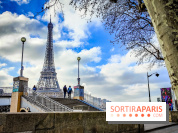The International Civil Aviation Organization has released a series of health guidelines in order to relaunch the air sector safely. Careful, non-surgical clothes facemasks are not allowed before boarding. The only masks authorized are disposable surgical masks.
Montreal-based UN agency International Civil Aviation Organization (ICAO) has published a series of health guidelines as for air travels to implement within the next weeks and months to come.
In a report, the organization lists health practices, along with several propositions to relaunch the air sector safely.
Put up in partnership with organizations and airline associations, ICAO’s measures are not compulsory and are led to evolve depending on the evolution of the world’s health situation.
So, according to the International Civil Aviation Organization, the States and airports and airlines must take common measures, to “facilitate convergence, mutual recognition and harmonization of aviation COVID-19 related measures across the globe” for passengers, crew and staff in airports and aboard planes.
Health guidelines issued by the International Civil Aviation Organization:
- Physical distancing to the extent feasible and implementation of “adequate risk-based measures where distancing is not feasible, for example in aircraft cabins”;
- Wearing of face coverings and masks by passengers and aviation workers within the terminal, where at least one-meter social distance cannot be maintained, as well as onboard planes. Airport staff will also have to wear protection gear such as faceshields, gloves or medical facemasks. From May 31, surgical facemasks are mandatory before boarding. Non surgical clothe facemasks are not allowed.
- Once inside the plane, passengers must keep their masks and walk as little as possible during the flight, avoiding queues to go to the bathrooms as they can contaminate other passengers. Passengers will be given a toilet booth depending on where they are seated in the plane.
- Routine sanitation and disinfection of all areas with potential for human contact and transmission;
- Health screening, which could include pre- and post-flight self-declarations, as well as temperature screening and visual observation, “conducted by health professionals”;
- Contact tracing for passengers and aviation employees: updated contact information should be requested as part of the health self-declaration, and interaction between passengers and governments should be made directly through government portals;
- Passenger health declaration forms, including self-declarations in line with the recommendations of relevant health authorities. Electronic tools should be encouraged to avoid paper;
- Testing: if and when real-time, rapid and reliable testing becomes available.
Now, we must wait and see if these health guidelines will be applied by airlines.















